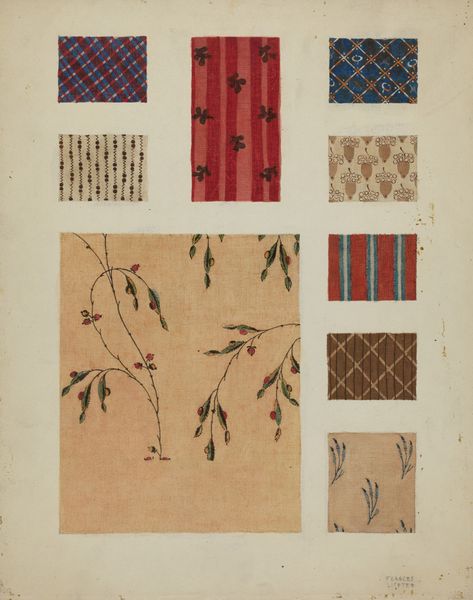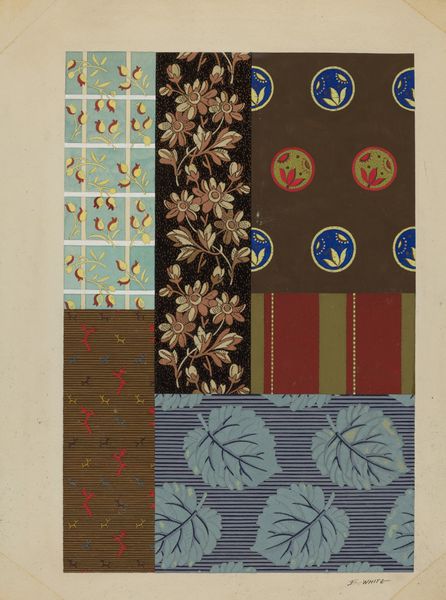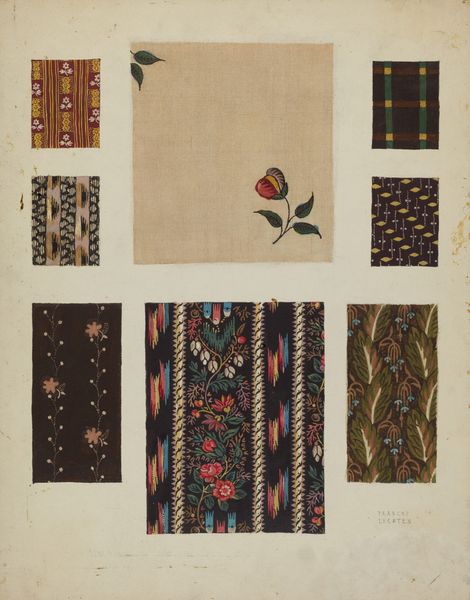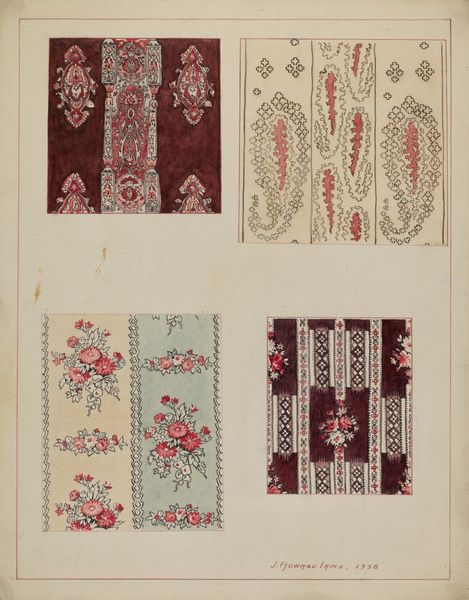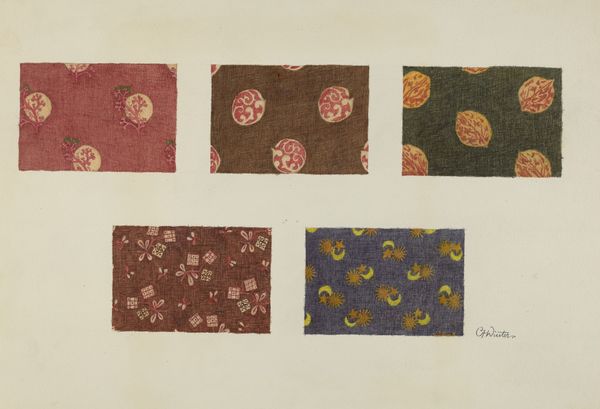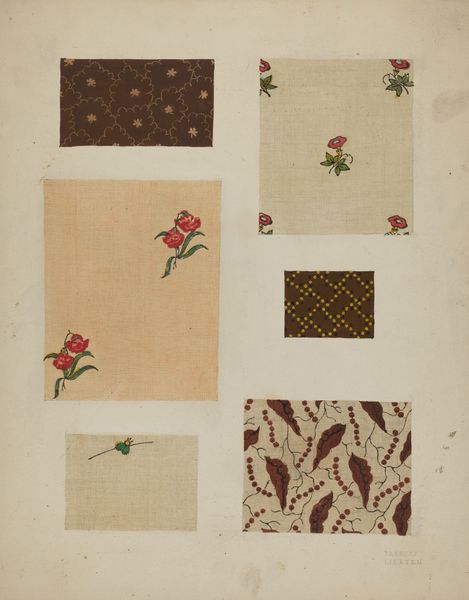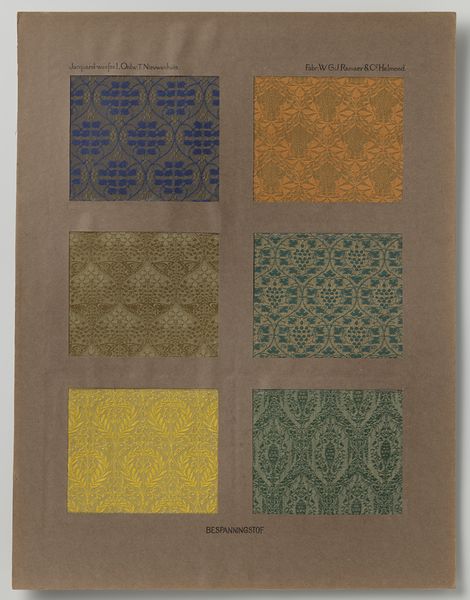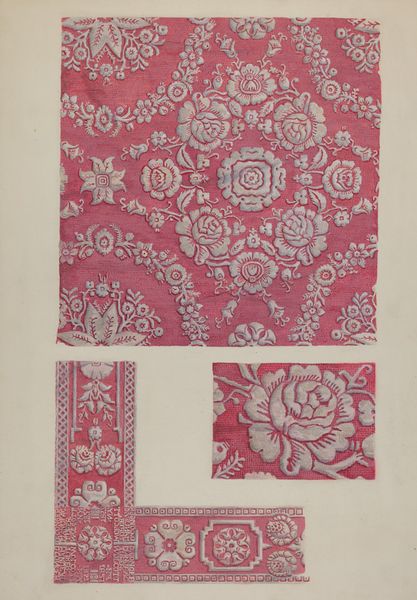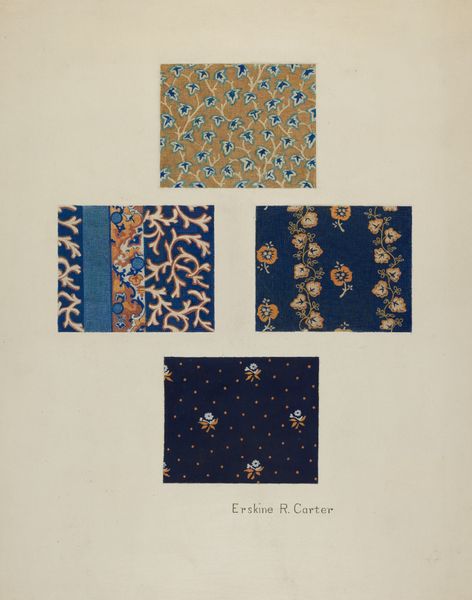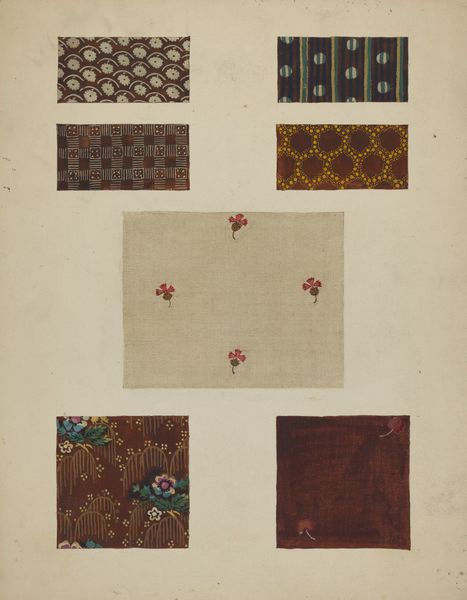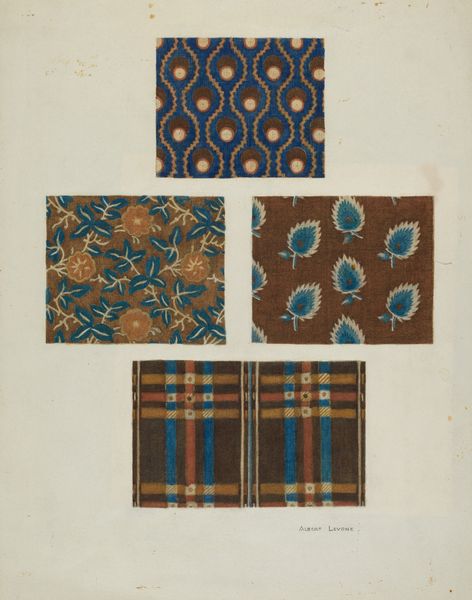
gouache, paper
#
gouache
#
paper
Dimensions: overall: 28 x 22.9 cm (11 x 9 in.)
Copyright: National Gallery of Art: CC0 1.0
Editor: Here we have Edward White’s "Quilt Patches," made around 1938 using mixed media and drawing on paper. It features six panels, each displaying a different repeating pattern. The styles vary quite a bit; what really stands out to me is how some appear more traditional, while others feel much more modern. How do you interpret this work? Curator: I’m immediately struck by the deliberate use of familiar motifs rendered in ways that both celebrate and subtly subvert their cultural associations. Take the fleur-de-lis, for example. Traditionally a symbol of French royalty and purity, here it's rendered in a stark, almost industrial palette. Do you notice how this disrupts its historical connotations? Editor: That's interesting; I hadn’t considered it that way. It’s almost like the image has been repurposed, its meaning shifted from the elite to something more…accessible, maybe? Curator: Precisely! And consider the paisley, typically associated with Eastern exoticism and later, the psychedelic 60s. Its inclusion points towards a broader dialogue about cultural appropriation and the evolving meanings of patterns over time. Editor: So, White isn't just presenting pretty designs. He’s engaging with the history and psychology embedded in these symbols? Curator: Absolutely. It’s a study in cultural memory. By placing these patterns side-by-side, he encourages us to contemplate the fluidity of symbols. How they accrue different layers of meaning depending on their context and the eye of the beholder. Does that change how you see it now? Editor: It really does. I came in thinking of it as just decorative, but now I recognize that there is this hidden language of cultural history being spoken by each patch. I see a lot more now, thank you! Curator: And I see how eager you are to interpret cultural emblems! That's quite rewarding.
Comments
No comments
Be the first to comment and join the conversation on the ultimate creative platform.

